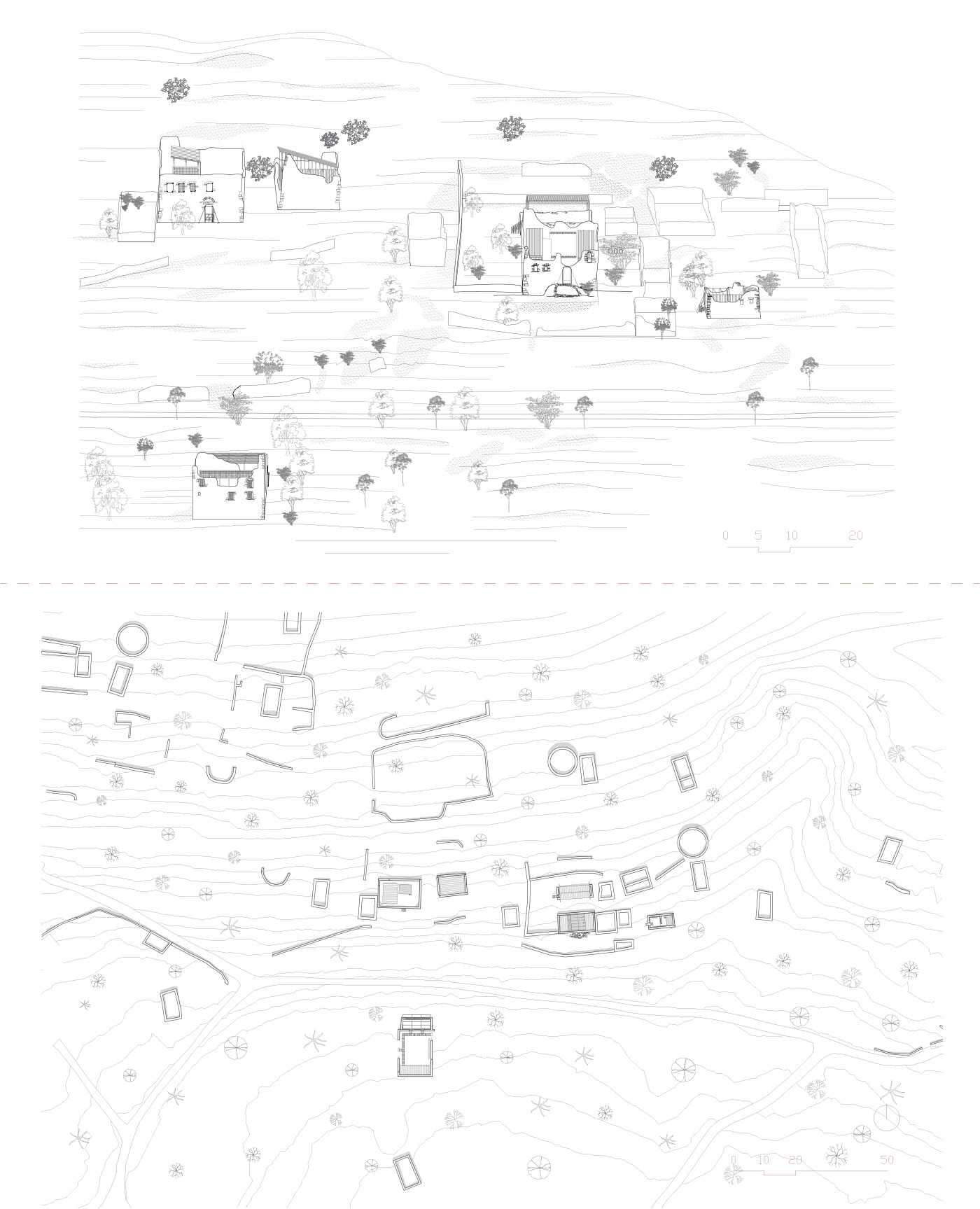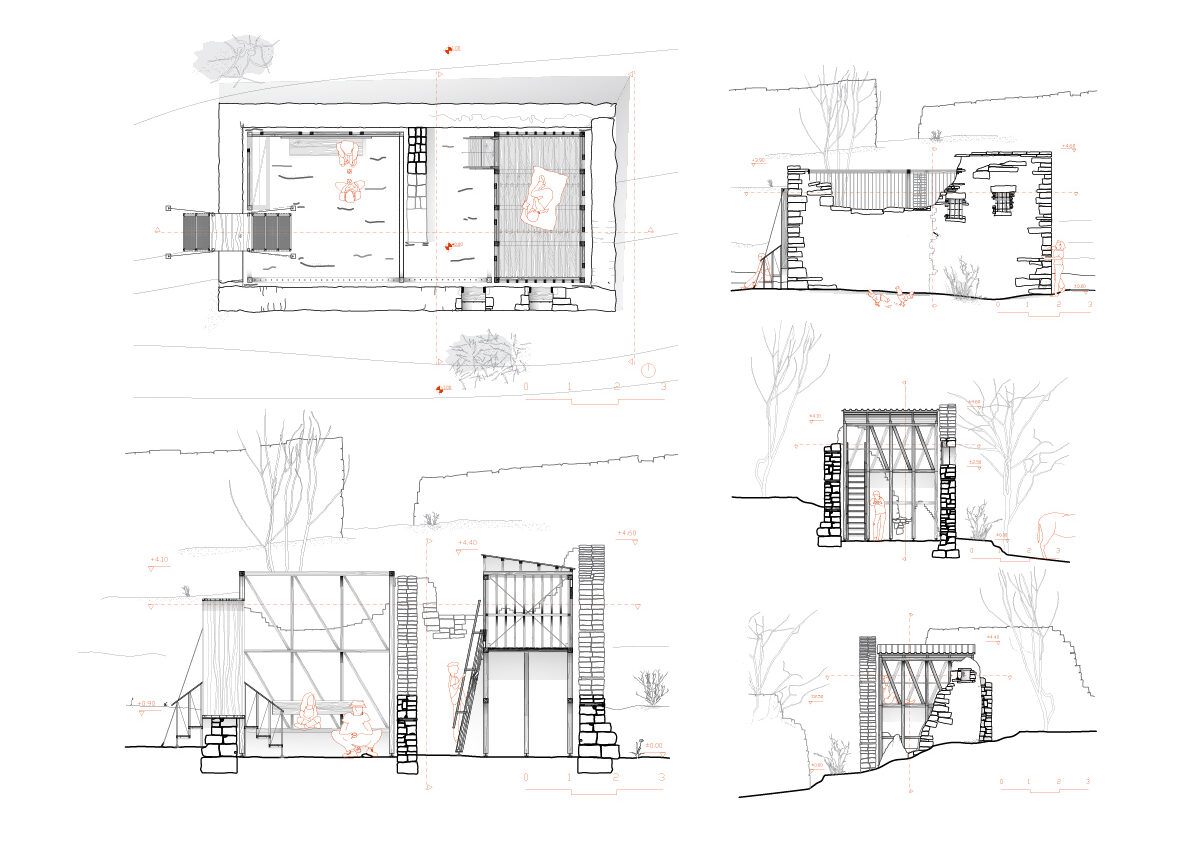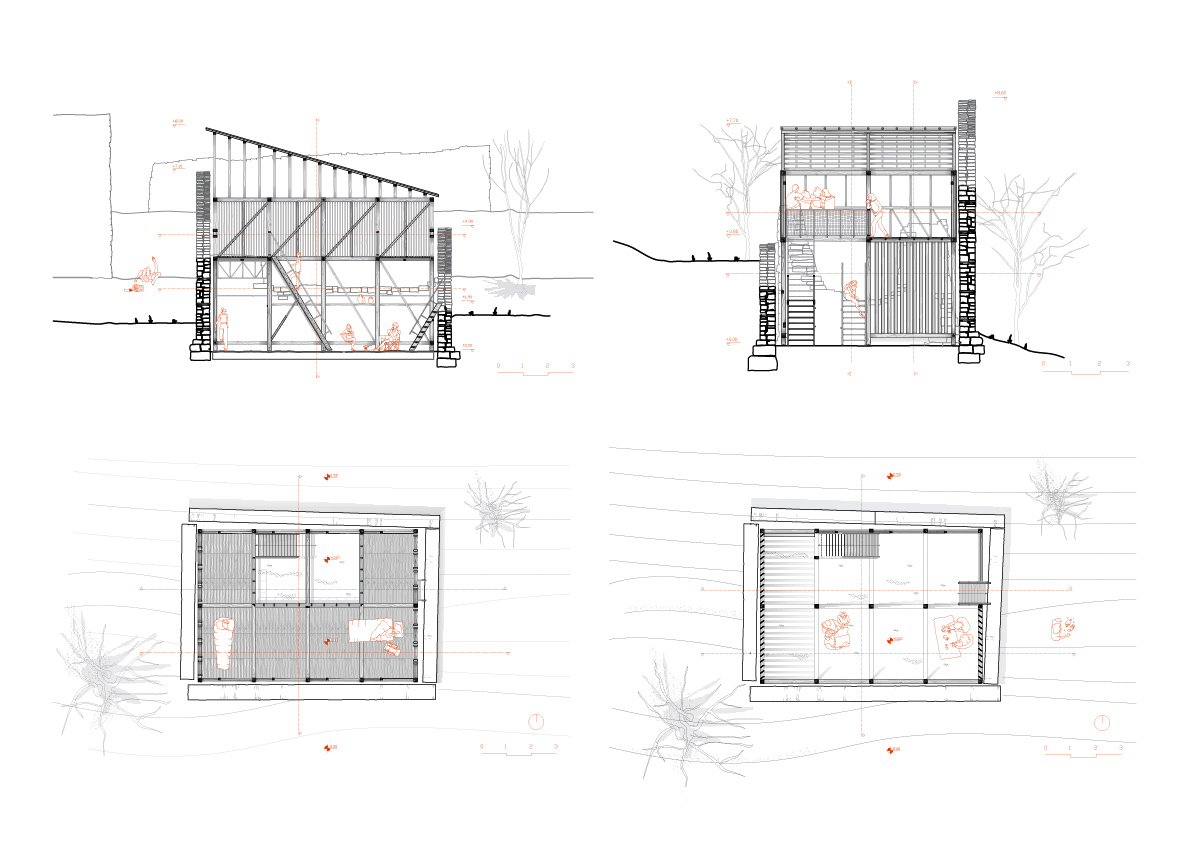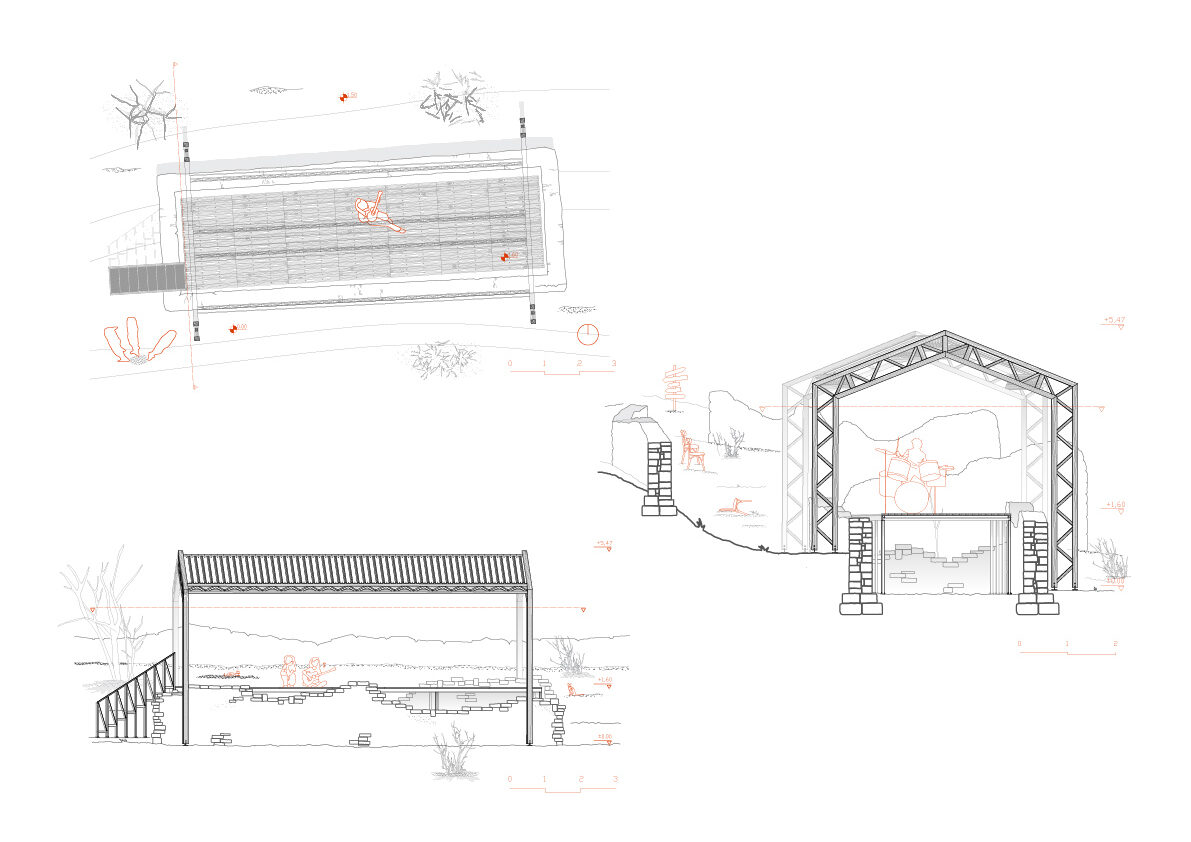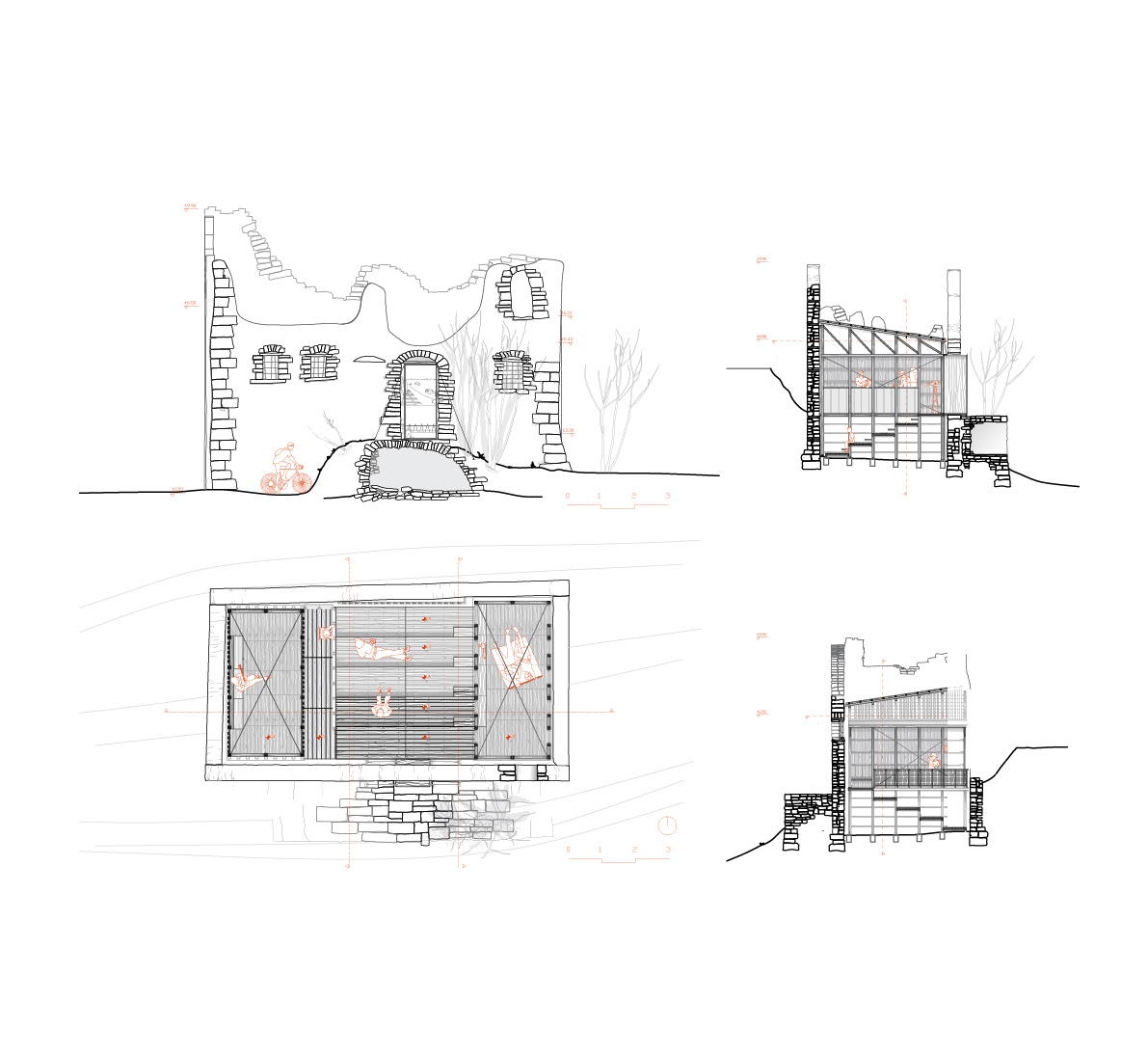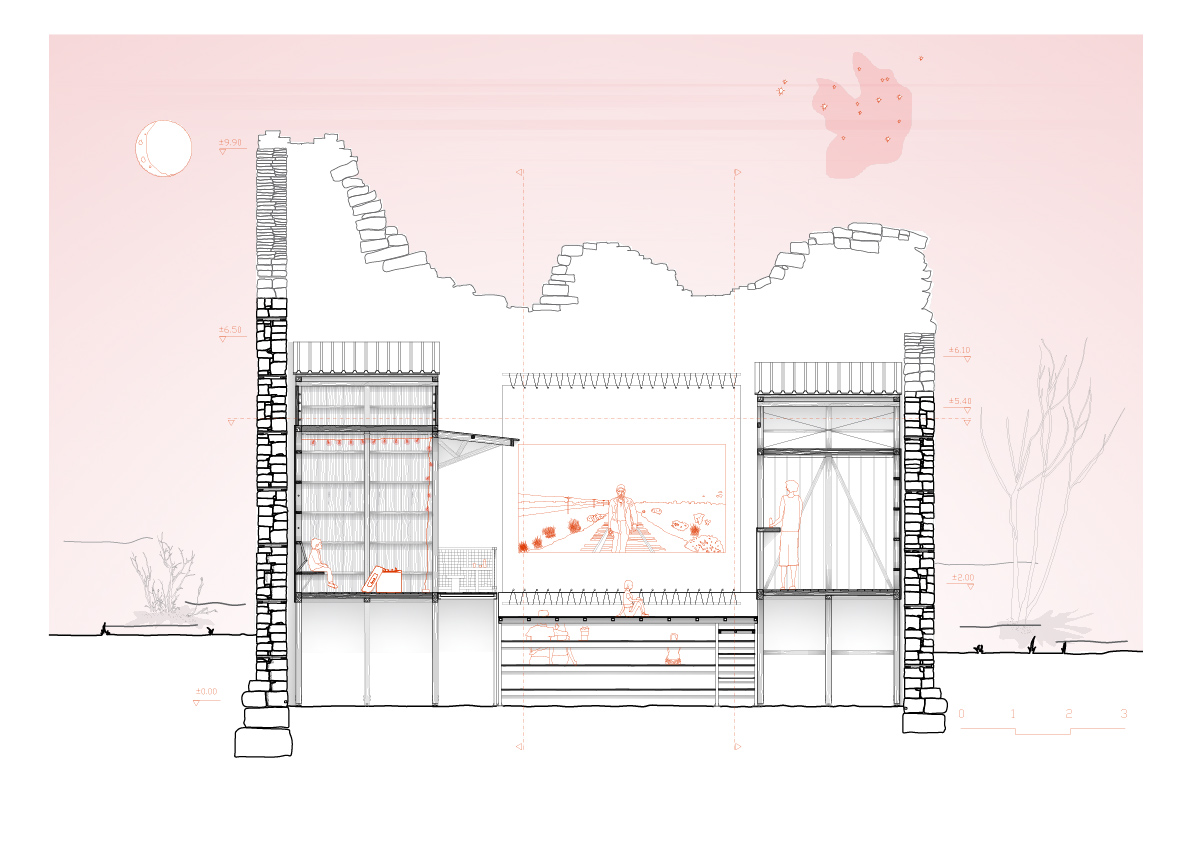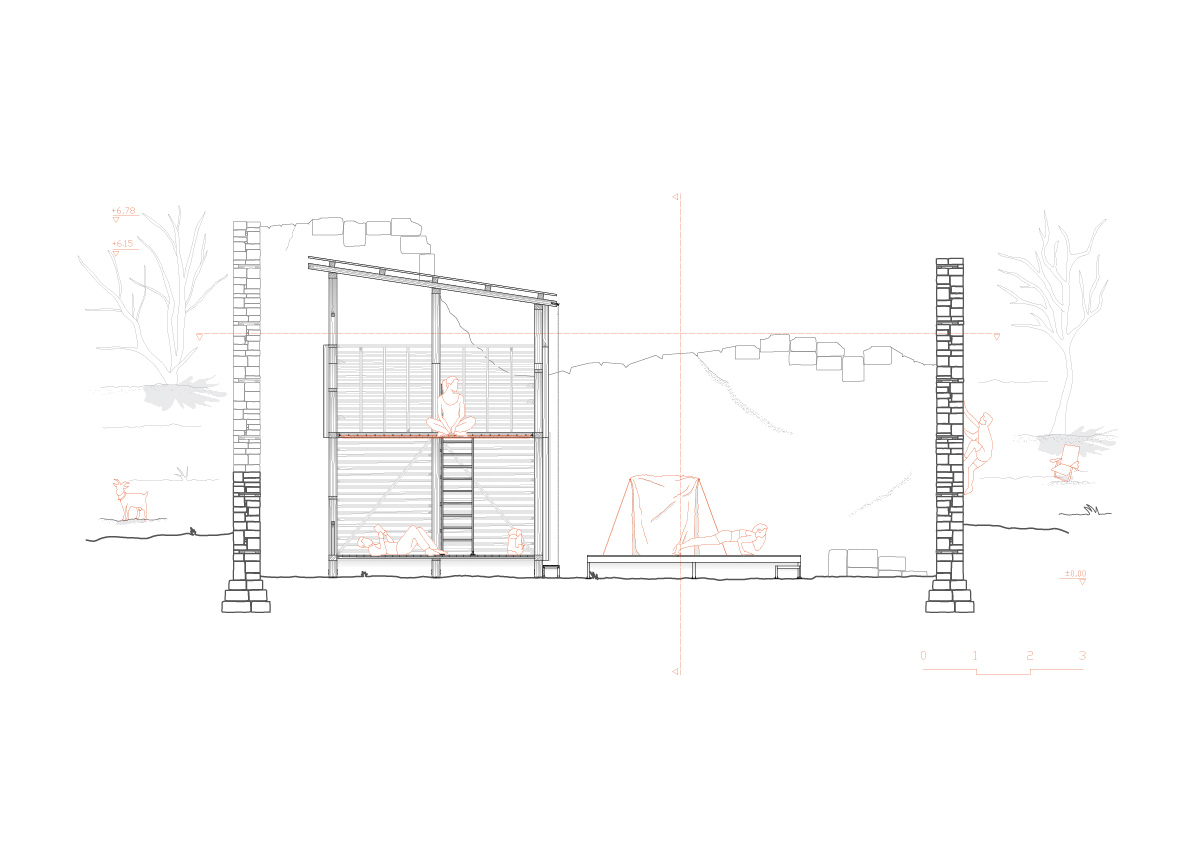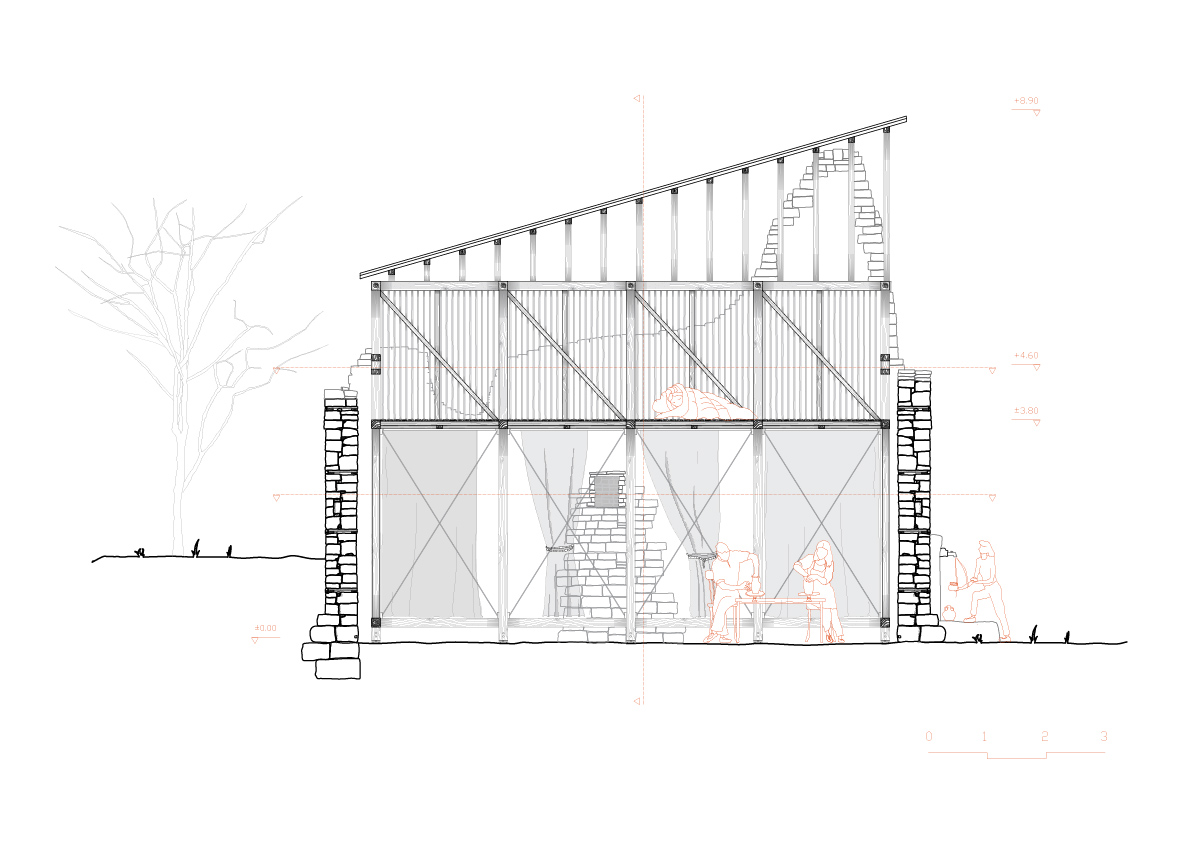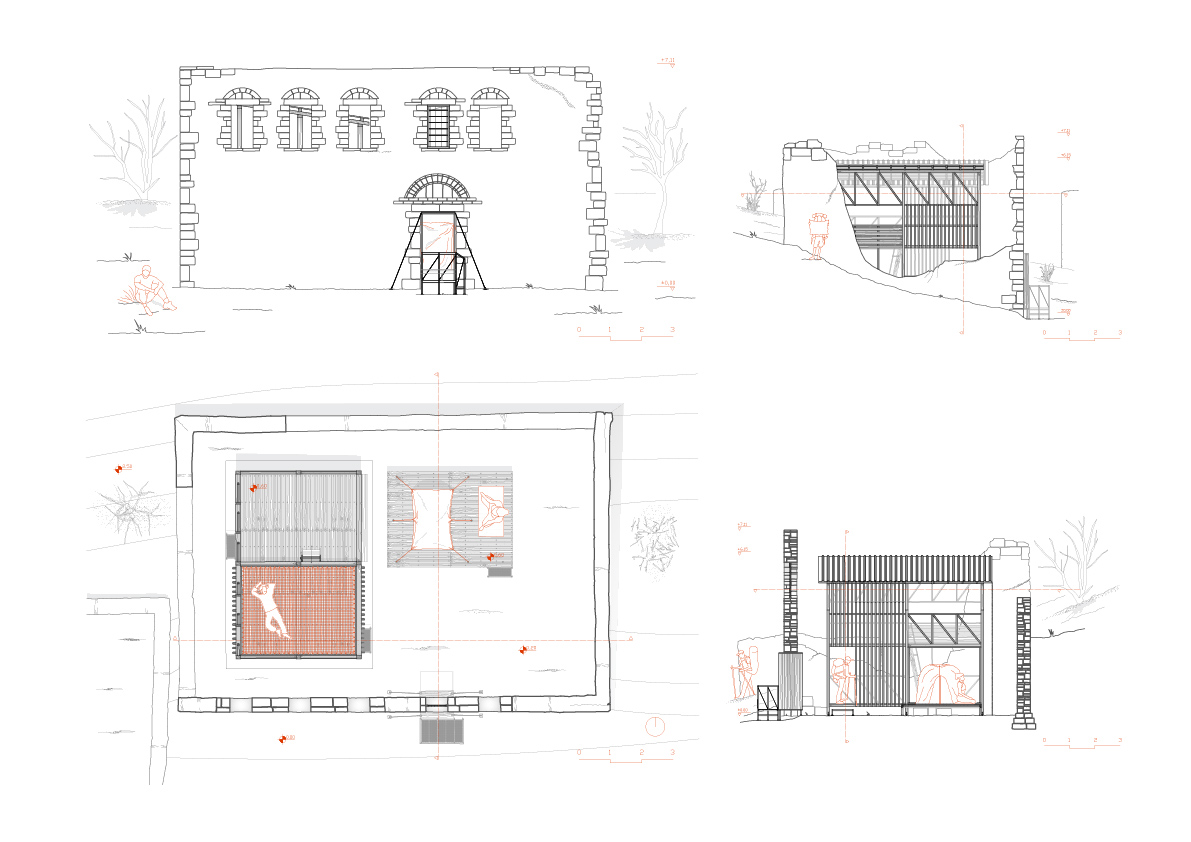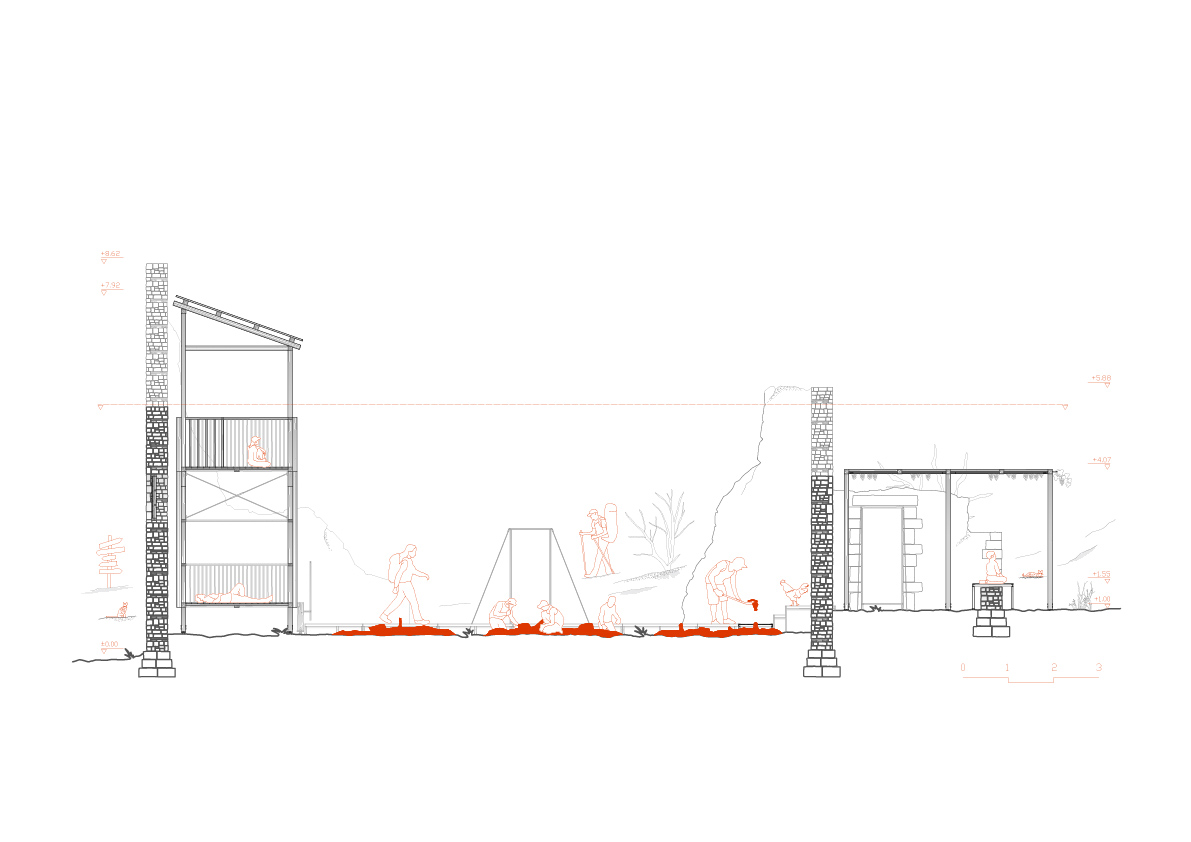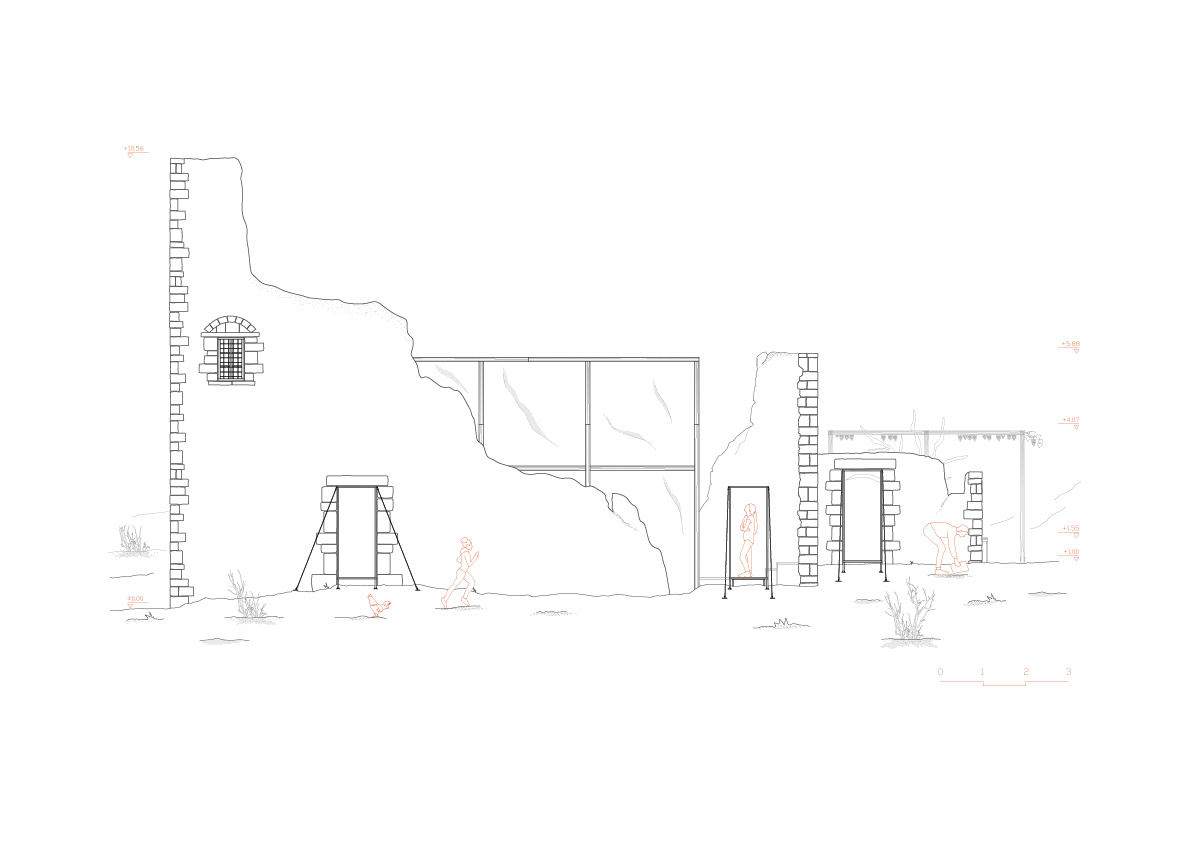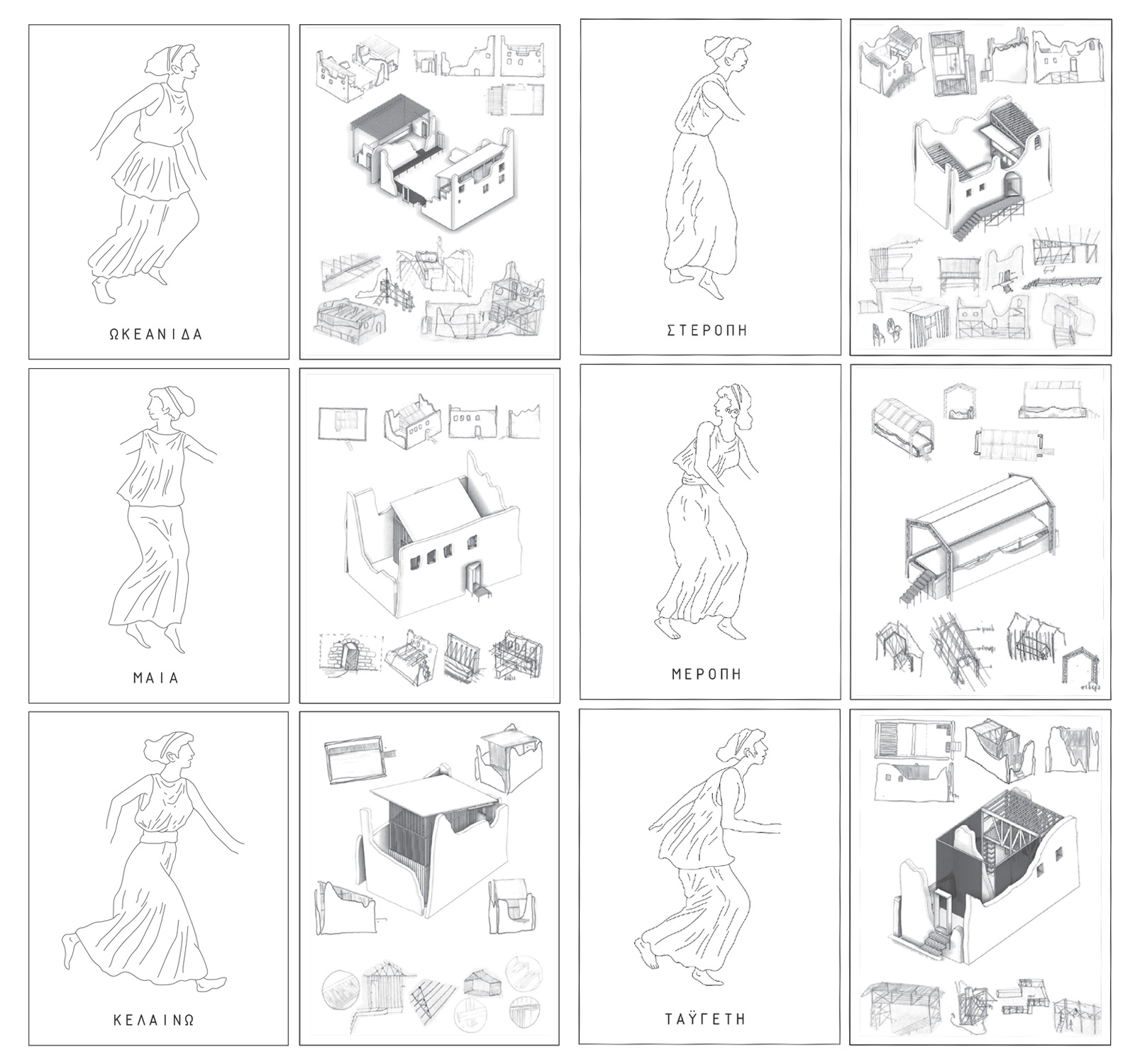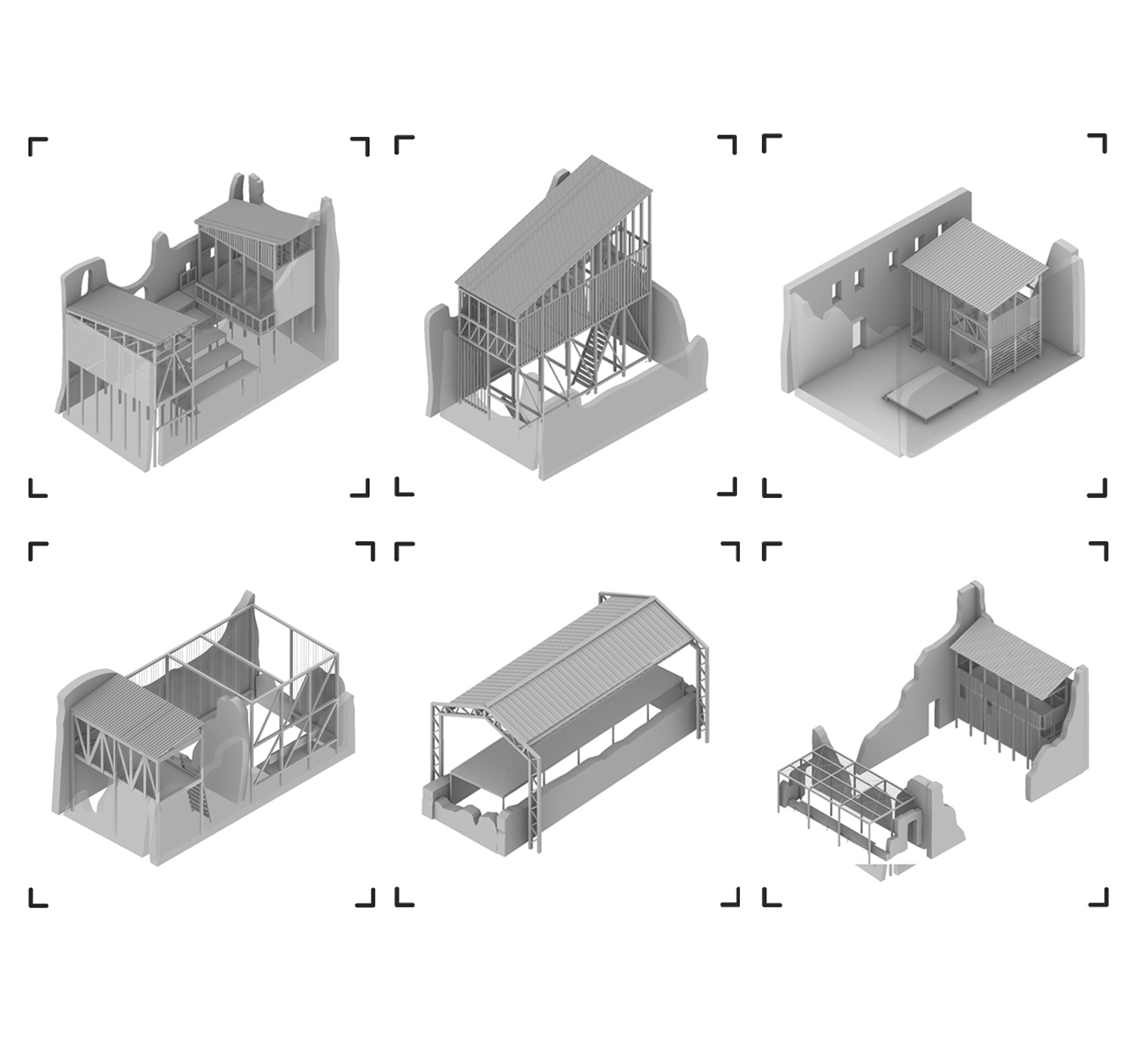Μέσα από την ιστορική και αρχιτεκτονική μελέτη για το χωριό Κάτω Μερόπη στην Βόρεια Ελλάδα, οι φοιτήτριες Κωνσταντίνα Παπαδιαμάντη και Βεατρίκη Δεμερτζίδου δημιουργούν ένα σενάριο επανερμηνείας και επαναχρησιμοποίησης υφιστάμενων κτισμάτων. Μέσα στα ερείπια προτείνονται παρεμβάσεις μικρής κλίμακας προκειμένου να διαμορφωθούν νέοι χώροι, εκτεθειμένοι και αυτοί με την σειρά τους στη φθορά του χρόνου.
Αυτή η διατριβή τιτλοφορείται Xerolethe- “Ξερο(ληθη)ά”.
Η ονομασία προήλθε από ένα λογοπαίγνιο της λέξης «Ξερολιθιά», μια παραδοσιακή τεχνική λιθοτεχνίας, με τη λέξη «λήθη», που σημαίνει ξεχνώ.
Το περιεχόμενο του έργου διερευνά τρόπους επαναχρησιμοποίησης και συντήρησης των αρχιτεκτονικών ερειπίων στην περιοχή της Κάτω Μερόπης, ενός προαστιακού χωριού στη Βόρεια Ελλάδα, που τείνουν να εγκαταλειφθούν.
Το έργο πέρασε από μια τεράστια περίοδο τοπογραφικών ερευνών και ιστορικών αναλύσεων, καθώς αντιπροσωπεύει έναν απτό χαρακτηριστικό τρόπο δόμησης και οργάνωσης των χώρων εντός και εκτός του ζωτικού χώρου.
Πιστεύουμε ότι φέρει μια σειρά από άυλες αξίες μνήμης που εξομολογήθηκαν οι κάτοικοι του χωριού που αρχειοθέτησαν τα χρονικά της καθημερινότητάς τους στο μικρό χωριό κατά τη μεταπολεμική περίοδο στην Ελλάδα.
Στοιχεία έργου
Τίτλος έργου Ξερο(ληθη)ά
Τύπος έργου Διπλωματική εργασία
Φοιτήτριες Κωνσταντίνα Παπαδιαμάντη & Βεατρίκη Δεμερτζίδου
Επιβλέπων καθηγητής Δημήτριος Κονταξάκης
Ημερομηνία παρουσίασης Σεπτέμβριος 2023
Πανεπιστημιακό ίδρυμα Τμήμα Αρχιτεκτόνων Μηχανικών, Α.Π.Θ.
Κείμενο από τις δημιουργούς
Through the historical, moral and architectural study of the village Kato Meropi in Northern Greece, the students Konstantina Papadiamanti and Veatriki Demertzidou create a scenario of reinterpetation and reuse of existing structures. Inside the ruins, small-scale interventions are proposed in order to shape new spaces, still surrendering to the ravages of time.
This thesis is titled Xerolethe- “Ξερο(ληθη)ά”.
The name was derived from a wordplay of the word “Ξερολιθιά”, a traditional stonework technique, with the word “λήθη”, which means forgetting.
The content of the project explores ways of reusing and conserving the architectural ruins in the area of Kato Meropi, an outskirt village in Northern Greece, which tend to be abandoned.
The project went through a vast period of topographical surveys and historical analysis, as it is representative of a tangible characteristic way of building and organizing the spaces in and outside the living space.
We believe that it carries a range of intangible values of memory confessed by the residents of the village that archived the chronicles of their everyday life in the small village during Post-War period in Greece.
The ruins of the area are built of stone and are approached with selective intervention, preserving entirely their existing condition.
Inside them, new structures are created in order to activate their emotional load and reintegrate them into the modern social environment.
Recognizing the ruin as a carrier of cultural footprints, an attempt is made to represent their semiology through small-scale
installations. The techniques and materials chosen reinterpret the historical structures of the area and look forward to a contemporary, but harmonious way of implementation. A fundamental tool for approaching the existing ruins was the historical, moral and architectural study of the village in general.
Through field research and the study of traditional writings, the spirit of the place was more understood, which is clearly reflected in the morphology of the buildings of Kato Meropi.
The landscape of the area was the reason for giving a mountaineering character to the facilities created, with the aim of providing relaxation and recreation areas for hikers and nature lovers in general.
From the total number of ruins, some of them have been selected, which due to their morphology, allow the creation of structures with different features.
On the inspiration of the name of the settlement, the selected shells were given names from the constellation of Pleiades, which were distinguished from each other because of their characteristics.
The structures created accommodate a variety of activities, without overcoming the dynamic of the existing ruins.
The visitor is able to visit and interact with the sites in the constantly changing landscape of each season, with the shells still surrendering to the ravages of time.
Facts & Credits
Project title Xerolethe
Type Diploma Thesis
Students Konstantina Papadiamanti, Veatriki Demertzidou
Supervisor Dimitris Kontaxakis
Presentation date September 2023
University Aristotle University of Thessaloniki – AUTH, Department of Architecture
Text by the authors
READ ALSO: Future Printed City 2050 | Διπλωματική εργασία των Μανώλη Διτσούδη και Μαρίας Κωνσταντίνας Τσίγκα

